Bulbs
Flower Basics
Flower Beds & Specialty Gardens
Flower Garden
Garden Furniture
Garden Gnomes
Garden Seeds
Garden Sheds
Garden Statues
Garden Tools & Supplies
Gardening Basics
Green & Organic
Groundcovers & Vines
Growing Annuals
Growing Basil
Growing Beans
Growing Berries
Growing Blueberries
Growing Cactus
Growing Corn
Growing Cotton
Growing Edibles
Growing Flowers
Growing Garlic
Growing Grapes
Growing Grass
Growing Herbs
Growing Jasmine
Growing Mint
Growing Mushrooms
Orchids
Growing Peanuts
Growing Perennials
Growing Plants
Growing Rosemary
Growing Roses
Growing Strawberries
Growing Sunflowers
Growing Thyme
Growing Tomatoes
Growing Tulips
Growing Vegetables
Herb Basics
Herb Garden
Indoor Growing
Landscaping Basics
Landscaping Patios
Landscaping Plants
Landscaping Shrubs
Landscaping Trees
Landscaping Walks & Pathways
Lawn Basics
Lawn Maintenance
Lawn Mowers
Lawn Ornaments
Lawn Planting
Lawn Tools
Outdoor Growing
Overall Landscape Planning
Pests, Weeds & Problems
Plant Basics
Rock Garden
Rose Garden
Shrubs
Soil
Specialty Gardens
Trees
Vegetable Garden
Yard Maintenance
How to Exterminate Wasps
How to Exterminate Wasps. Wasps are a nuisance that can become dangerous, especially around small children and pets. According to the New York City Environmental Health Services, there are two types of wasps: social and solitary. Social wasps, such as yellow jackets and paper wasps, live in groups in one large nest. Solitary wasps, like mud-daubers...
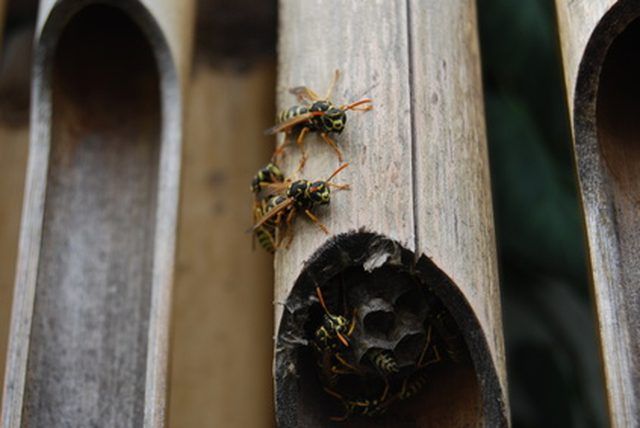
Wasps are a nuisance that can become dangerous, especially around small children and pets. According to the New York City Environmental Health Services, there are two types of wasps: social and solitary. Social wasps, such as yellow jackets and paper wasps, live in groups in one large nest. Solitary wasps, like mud-daubers and spider wasps, travel on their own, living in individual nests. When wasps sting, they inject melittin, a chemical that causes a sharp pain, then fades to a dull aching sensation. People with wasp allergies can experience hives, swelling, or even life-threatening anaphylactic shock. Unlike bees, wasps can sting several times because their stingers are smooth, making them all the more dangerous. In order to exterminate these stinging insects, it is important to take precautions and deal directly with the nest.
Things You'll Need
Protective clothing
Wasp and hornet spray
Note the location of the wasp nest. Nests are often located in trees or in crevices on house siding or vaulted roofs. Consider contacting a professional exterminator if the nest is located in a high area that is not easily accessible. If the wasp nest is in a tree and is not affecting surrounding humans, leave it. Wasps are beneficial to the environment, feeding on spiders and other possible pests.
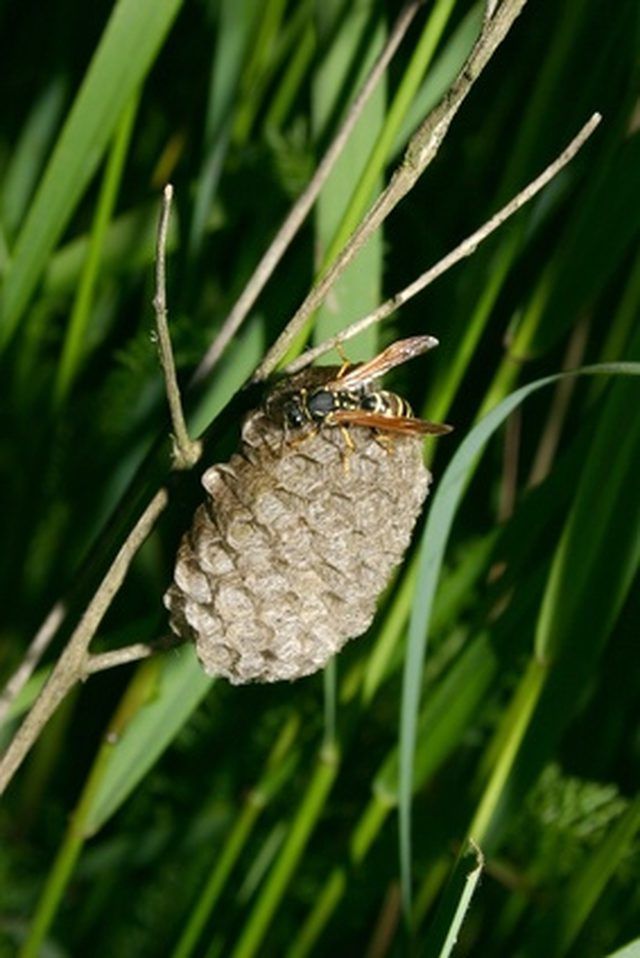
Wear protective clothing such as long sleeves, long pants, and gloves when exterminating wasps. Wearing a beekeeper's veil is recommended by the New York City Environmental Health Services. Purchase an aerosol wasp and hornet spray from a convenience or hardware store.
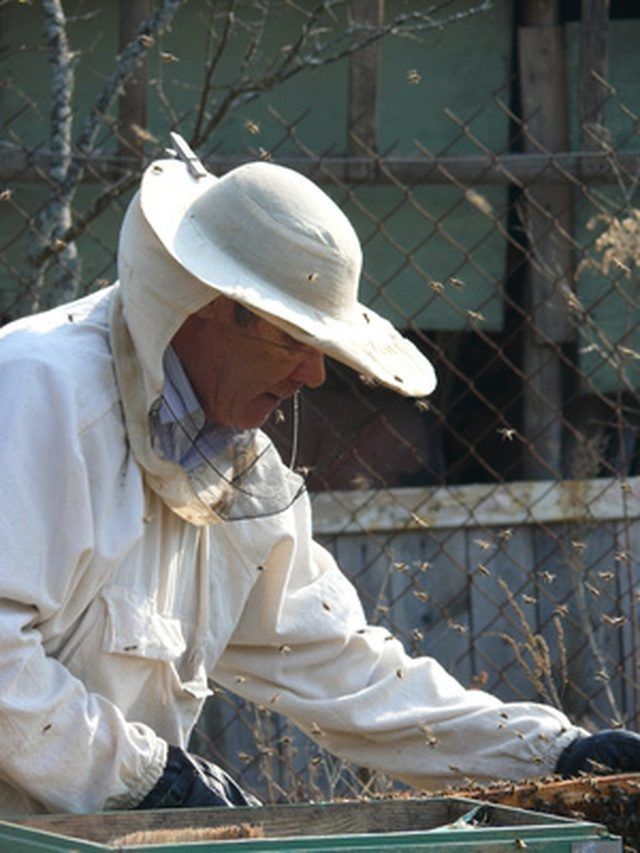
Approach the nest in late evening, when the wasps are the most inactive. At night, wasps gather in the nest to keep warm. In temperatures below 50 degrees Fahrenheit, wasps have difficulty flying, reducing the possibility of potential stings.
Spray the entire nest, focusing on the entrance hole, with the wasp and hornet spray. Be sure to follow the application recommendations on the can.
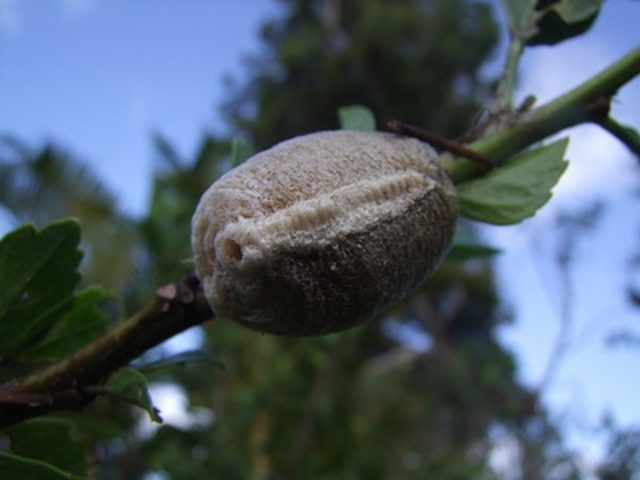
Observe the nest the following morning or afternoon. The wasps are exterminated if no activity is visible. If there is still wasp activity, repeat the extermination process every three days until the wasps are dead.
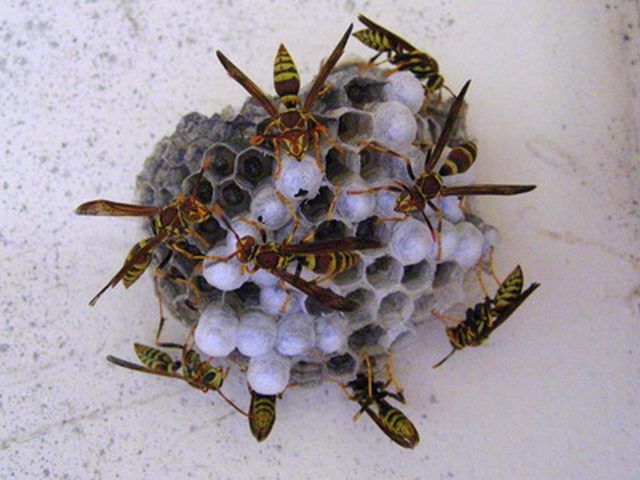
Tips & Warnings
For ground wasp nests, mix a solution of soap and water, and pour it down the hole that leads to the nest. Do this during late evening when the wasps are nesting. An insecticide dust such as carbaryl or chlorpyrifos can also be used. Once the wasps have been exterminated, cover the nest entrance with soil.
Wasps are very dangerous. In the instance of anaphylactic shock caused by a wasp sting, immediately dial emergency services.